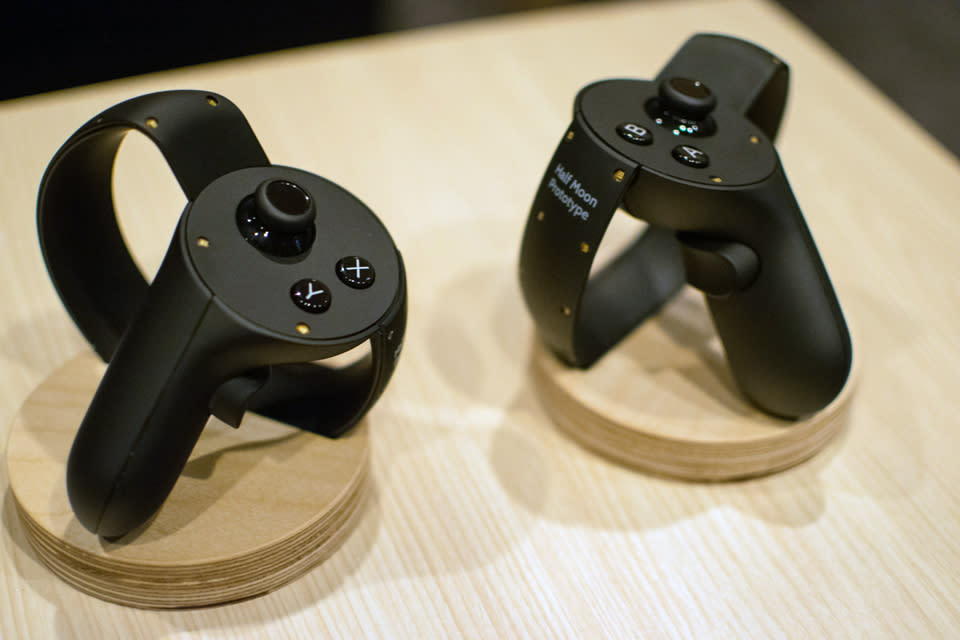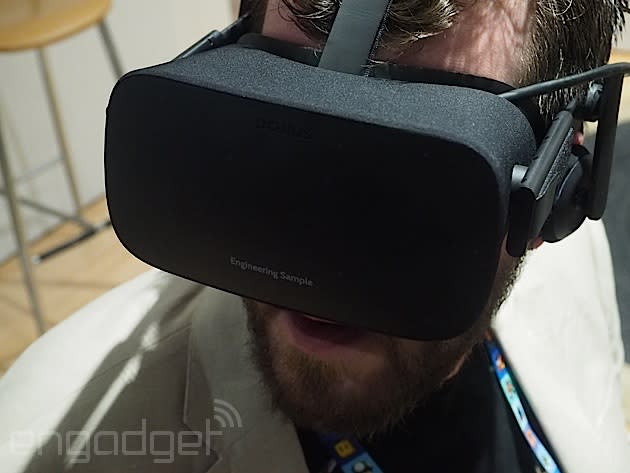At E3, I saw the missing pieces of the VR puzzle

The excitement around virtual reality may have started when Sony unveiled Project Morpheus last year, but last week's E3 was its coming out party. The thing is, I've been around long enough to remember the hype and subsequent commercial flatline over gaming in stereoscopic 3D. So going into this year's grand gaming gala, I was skeptical -- I had that awkward tech history footnote in mind -- and to a point, I still am. But Oculus helped me get over that a bit. All it took was a game from a trusted developer -- Insomniac Games -- and an input solution that makes VR feel less isolating.
Insomniac Games' Edge of Nowhere is what made me feel like VR is actually a viable gaming platform and not just an outlet for a never-ending march of tech demos. The game takes place in 1930s Antarctica and you're controlling an intrepid explorer through scenarios reminiscent of H.P. Lovecraft's At the Mountains of Madness, with your head acting as the camera control. You have full freedom to look wherever you want in Nowhere and the camera is at a farther distance than it is in a majority of third-person games. I discovered pretty quickly that where you want to look isn't always where you should. At one point, a huge tentacle-mouthed beast was chasing me through the snow. Turning my head 180 degrees to get a look at the monstrosity up close and personal wasn't something I should've done.
Edge of Nowhere made me feel like VR is actually a viable gaming platform and not just an outlet for a never-ending march of tech demos.
I felt right at home guiding my explorer across rickety, wind-blown suspension bridges and dropping flares to the bottom of a pitch-black cave to get a sense of how deep it was as I rappelled down. Paired with the Xbox One controller in my hand, it all felt incredibly familiar; it worked just fine as an input for VR. But despite all the heavy lifting it did, it wasn't Edge of Nowhere, or even Eve: Valkyrie and its massive-scale dogfights in space that took me from being wary about VR to someone who believed in the medium. What really brought everything to a head was a separate demo where I tried Oculus Touch, the company's input solution for bringing your hands into virtual reality.
While there are plenty of third-party peripherals that want to be the input device for non-gaming VR experiences, Oculus Touch is among the best and least gimmicky I've tried. Touch isn't a glove you put on; it's an incredibly ergonomic, sort of pistol-grip pair of controllers you wrap your hands around. It's kind of like the Wii Remote and Nunchuk, but much more refined and less toy-like. An analog stick and two face buttons rest on the top of each wireless controller and a pair of triggers resides on the grips. A "guard" of sorts covers over the triggers and, like the rest of the controllers, it's covered in LEDs for motion tracking.
Pulling a trigger on the controller while hovering over a pingpong paddle let me pick it up. The same gesture worked for grabbing the remote to a radio-controlled tank, the slingshot or the wooden block on the virtual table in front of me too. Despite an Oculus employee being on the other side of a wall, it felt like he was directly in front of me in the virtual space. I passed him Roman candles and M-80s to light, and after he handed them back, I shot fireballs and threw the firecrackers at him. Whoops. Then he talked me through the entire process of how to pick up and use the slingshot, which I then fired at his head. I make no apologies for my behavior in VR.

Every now and again, I found myself looking down at the hands in front of me. They weren't mine, but they were "mine." The disembodied mitts floating in front of me weren't as big or as beaten up as my own, but they moved in time with mine. As far as my brain was concerned, these were my hands; it was pretty incredible. The illusion broke a bit when I came in contact with the real world, though. While playing VR tetherball, my knuckles brushed against the rather low ceiling in Oculus' meeting room a number of times. And while the motion tracking is incredibly accurate, giving a thumbs up or doing finger guns (thumbs up, pointer fingers extended) took a moment for the tracking technology to register and replicate in VR. Oculus Vice President of Product Nate Mitchell told me that Touch wouldn't ship with the Rift's consumer version next spring and that it's still very much a prototype.
My initial worry about VR being a fad wasn't exactly abated by Mitchell's response when I asked him about it being the next stereoscopic 3D. "Seeing is believing," he said. "The short answer to that question is to just show it to them."
"With VR, I don't think it's so much convincing people," Mitchell said before pausing and correcting himself. "Actually, we have a huge job of convincing people."

